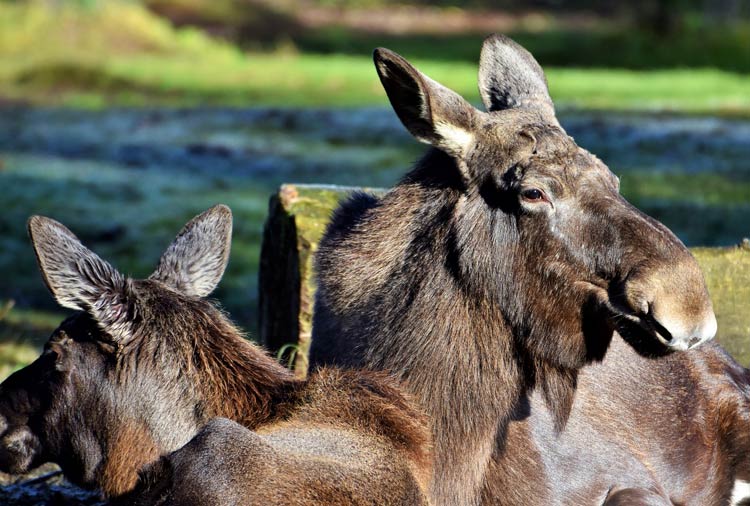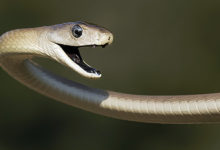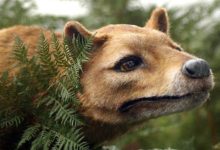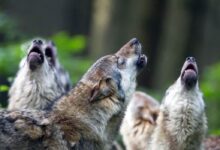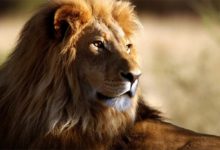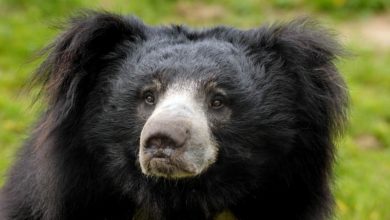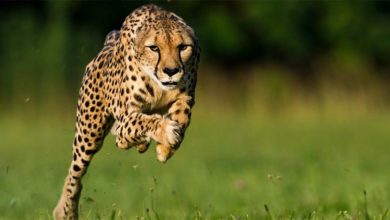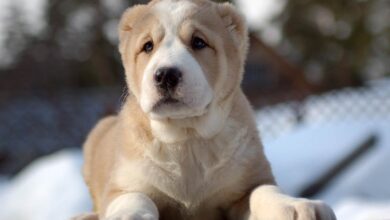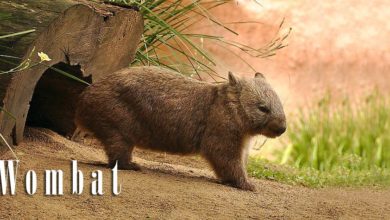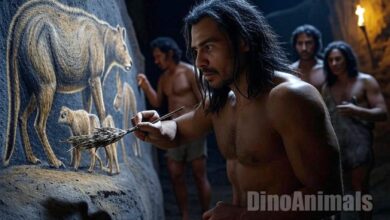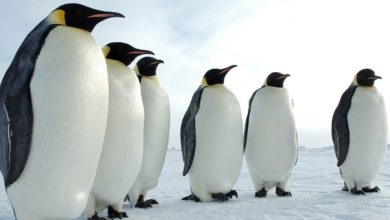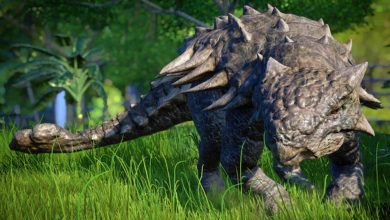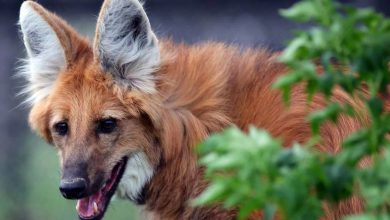Discovering the fascinating world of the moose
The moose, with its massive size and distinctive antlers, is a creature that commands attention and respect. Found in the forests and wetlands of North America, Europe, and Asia, this magnificent animal is the largest member of the deer family and is revered for its impressive stature, formidable strength, and elusive nature. From its towering height to its complex social structure, the moose is a fascinating subject that never fails to capture the imagination of nature enthusiasts and animal lovers alike. So, let’s explore the fascinating world of the moose and discover what makes this majestic creature so marvelous and interesting.
The moose, scientifically known as Alces alces, is a truly majestic creature that never fails to capture the imagination of those who encounter it. With its impressive size, towering height, and distinctive antlers, the moose is a fascinating and formidable member of the deer family. On average, an adult moose stands between 1.4 and 2.1 meters (4 feet 7 inches to 6 feet 11 inches) tall at the shoulder, making it the largest deer species in the world.
The moose is also known for its impressive weight, with males weighing between 380 and 700 kg (838 to 1,543 lb) and females weighing between 200 and 490 kg (441 to 1,080 lb). This incredible size is a result of the moose’s diet, which is primarily made up of woody vegetation such as bark, twigs, and leaves. In fact, a typical moose can eat up to 32 kg (71 lb) of food per day!
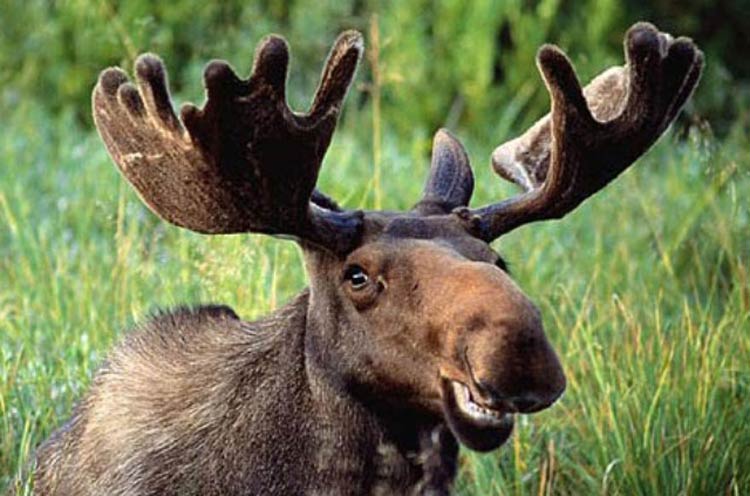
One of the most striking features of the moose is its antlers, which are used by males to establish dominance during the breeding season. The antlers can reach an impressive width of up to 2 meters (79 inches) and can weigh as much as 36 kg (79 lb). While the antlers of a mature bull typically range between 1.2 and 1.5 meters (3 feet 11 inches to 4 feet 11 inches), the widest spread ever recorded was an astonishing 2.1 meters (83 inches) across.
Despite its impressive size, the moose is a surprisingly elusive animal. With a keen sense of hearing and an excellent sense of smell, the moose is able to detect predators from great distances and can quickly disappear into the forest if threatened. This combination of impressive size and stealthy behavior makes the moose a truly captivating and fascinating creature that is sure to leave a lasting impression on all who encounter it.
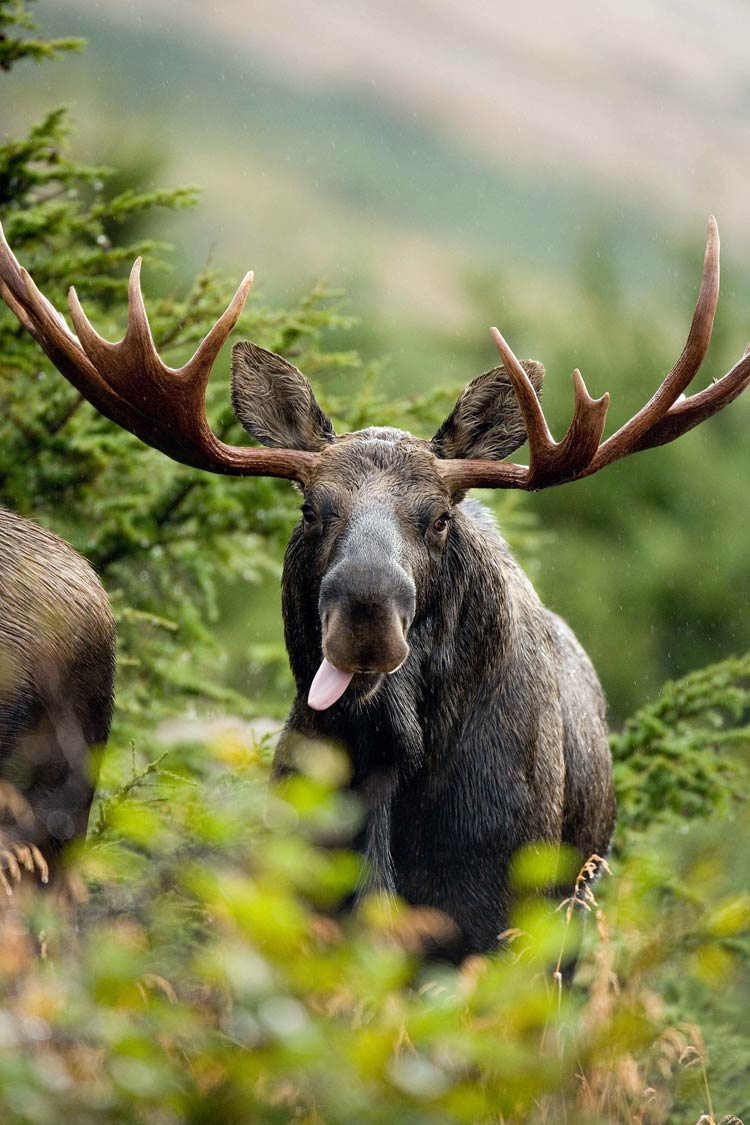
Taxonomy
The moose belongs to the family Cervidae, which includes other deer species such as elk, mule deer, white-tailed deer, and reindeer. The scientific name for the moose is Alces alces, with the genus name “Alces” deriving from the Latin word for “moose”, and the species name “alces” also derived from a Latin word for the animal.
Classification
- Kingdom: Animalia
- Phylum: Chordata
- Class: Mammalia
- Order: Artiodactyla
- Family: Cervidae
- Subfamily: Capreolinae
- Tribe: Alceini
- Genus: Alces
- Species: Alces alces
Subspecies
There are several subspecies of moose, which are differentiated by their geographic location, physical characteristics, and genetics.
In North America, the subspecies include:
- Eastern moose (Alces alces americana)
- Western moose (Alces alces andersoni)
- Shiras’ moose / Yellowstone moose (Alces alces shirasi)
- Alaska moose / Alaskan moose (Alces alces gigas)
In Eurasia, there are several subspecies, including:
- Siberian / East Siberian moose / Mid-Siberian / Lena elk (Alces alces pfizenmayeri)
- Yakutian moose (Alces alces yakutensis / Alces alces pfizenmayeri)
- Ussuri, Amur, Manchurian elk (Alces alces cameloides)
- Chukotka, East Siberian elk (Alces alces buturlini)
- European moose / European elk (Alces alces alces)
The moose is a fascinating and iconic species with a rich and varied history that has captivated humans for centuries.
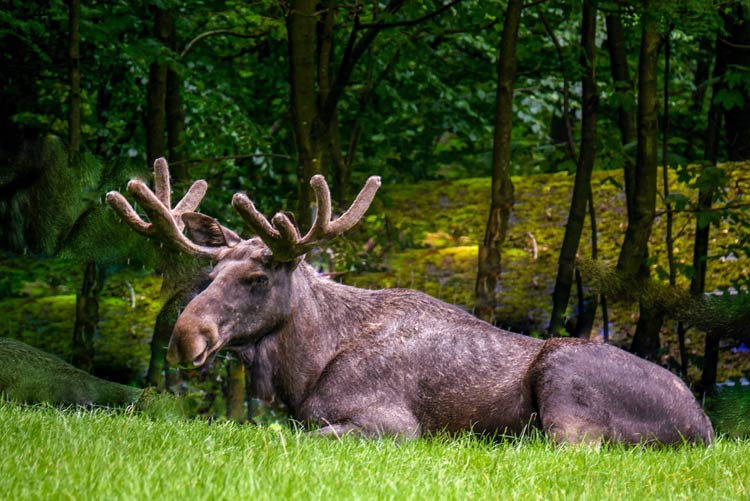
Etymology and Name
The word “moose” is believed to have originated from the Algonquian language, specifically from the Narragansett language in North America. The Narragansett term for the moose was “moos” or “moosu,” which was later anglicized to “moose” by English-speaking settlers. In Europe, the moose is known as the “elk,” but the name “elk” in North America actually refers to a different species of deer.
It’s interesting to note that the name “moose” was initially used to refer to a different animal altogether. In the 16th century, “moose” was used to refer to a kind of deer that is now known as the elk in North America. However, the name “moose” eventually became associated with the larger, more distinctive Alces alces that we know today.
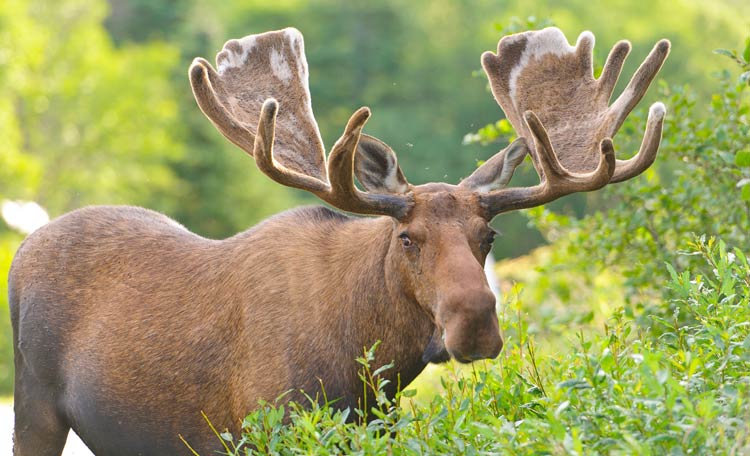
Basic Facts About the Moose
- The moose (Alces alces) is the largest species in the deer family, Cervidae.
- Moose are found in boreal and mixed deciduous forests in North America, Europe, and Asia.
- They have a distinctive, bulbous snout and a dewlap (flap of skin) under their chin.
- On average, adult moose stand between 1.4 and 2.1 meters (4 feet 7 inches to 6 feet 11 inches) tall at the shoulder, and can weigh between 200 and 700 kg (441 to 1,543 lb) depending on age, sex, and subspecies.
- Males are called bulls, females are called cows, and their offspring are called calves.
- Moose are herbivores, feeding primarily on leaves, twigs, and bark of trees and shrubs.
- They are solitary animals, except during mating season in the fall when bulls compete for cows.
- Moose have few natural predators, but are sometimes hunted by wolves, bears, and humans.
- Moose have a distinctive vocalization, which sounds like a low, mournful bellow.
- They are strong swimmers and can dive up to 5.5 meters (18 feet) underwater to feed on aquatic plants.
- Moose are important ecological and cultural symbols in many regions where they are found.
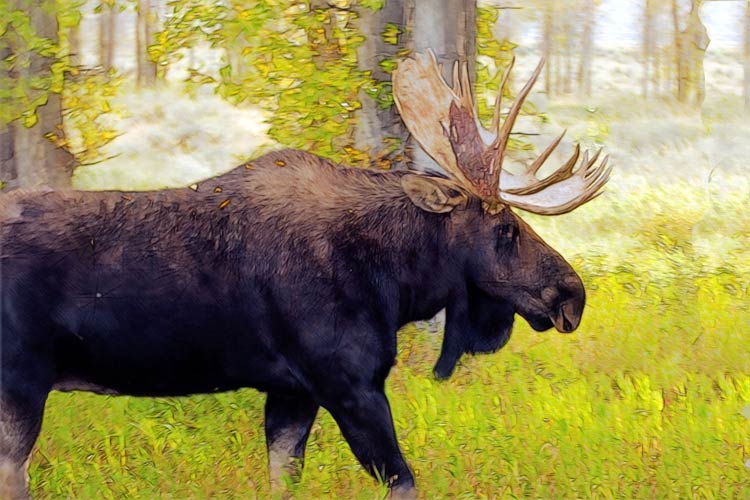
Distribution and habitat
The moose has a wide distribution throughout the Northern Hemisphere, and its range covers much of Canada, Alaska, northern Europe, and Russia. Moose can also be found in some parts of the lower 48 United States, including Minnesota, Maine, and Wyoming.
Moose are generally found in forested areas, where they can feed on a variety of leaves, twigs, and bark. They tend to prefer wetlands and areas with water, as they are strong swimmers and enjoy feeding on aquatic vegetation. During the winter, they may migrate to areas with more food and shelter.
In North America, the moose’s range extends from the northeastern United States, through Canada and into Alaska. In Europe, moose can be found in northern and eastern regions, such as Sweden, Norway, Finland, and Russia. Moose in Asia are primarily found in Siberia and parts of Mongolia.
Overall, the moose is an adaptable species that can survive in a variety of habitats, from dense forests to open tundra. However, habitat loss and fragmentation due to human activities, such as logging and road building, can impact their distribution and population numbers.
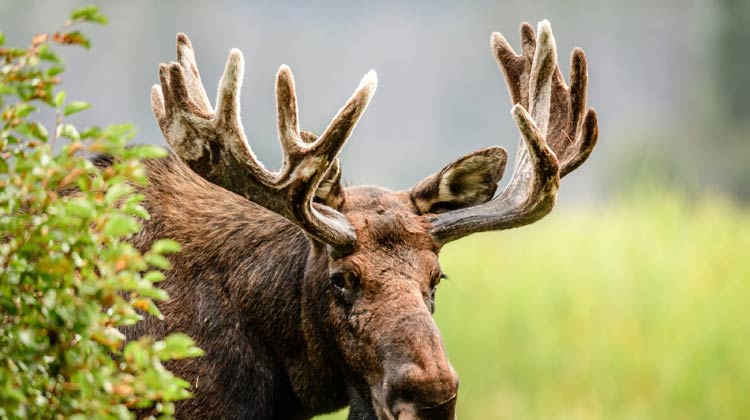
Characteristics
Appearance
The moose is a large and impressive animal, with a distinctive appearance that sets it apart from other deer species. On average, adult moose stand between 1.4 and 2.1 meters (4 ft 7 in – 6 ft 11 in) tall at the shoulder, making them one of the largest deer species in the world. They are also heavy-bodied, with males (or “bulls”) weighing between 380 to 700 kg (838 to 1,543 lb) and females (or “cows”) typically weighing 200 to 490 kg (441 to 1,080 lb), depending on the individual’s age, gender, and geographic location.
Moose have long, slender legs that are well adapted for moving through deep snow and wading through water. They have a hump on their shoulders and a pronounced nose, which helps them warm up the air they breathe during cold weather. Their fur is usually brown or gray, and can appear shaggy, especially in the winter when it thickens for insulation. Their faces are long and angular, with a broad, flat muzzle and large nostrils. Moose also have wide, flattened antlers that can span up to 1.8 meters (5 ft 11 in) in mature males.
Overall, the moose’s unique physical characteristics make it a fascinating and impressive animal to observe in the wild.
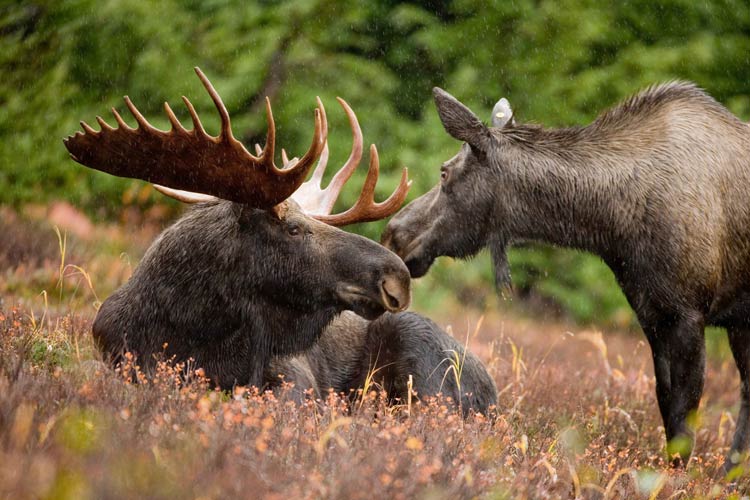
Antlers
One of the most notable physical features of male moose is their large, broad antlers. These antlers are made of bone and are covered in a thin layer of skin called velvet, which nourishes them as they grow. The antlers can weigh up to 30 kilograms (66 lb) and can grow up to 1.5 meters (4 ft 11 in) in length in mature bulls.
The widest spread recorded for a moose antler was 210 centimeters (83 in) across. This measurement was for an Alaskan bull moose, which also holds the record for the heaviest antlers, weighing 36 kilograms (79 lb). It’s worth noting that antler size and shape can vary based on factors such as age, nutrition, and genetics. Mature Alaskan adult bull moose between 5 and 12 years old typically have a normal maximum spread greater than 200 centimeters (79 in), but by the age of 13, their antlers can begin to decline in size and symmetry.
Moose antlers grow from the base of the skull and develop in the spring and summer months. They start out as soft, spongy nubs that are covered in velvet, and gradually harden as the antlers mature. The velvet dries and is eventually rubbed off as the bull thrashes its antlers against trees and shrubs to prepare for the breeding season.
Moose antlers have a unique shape that is well adapted for their lifestyle. They are wide and flat, with many tines or branches, which can help the moose to defend itself and to attract mates. The antlers are also an important tool for social interactions among male moose during the breeding season, as they use them to intimidate rivals and establish dominance.
It’s important to note that only male moose have antlers, and they shed them every year in the winter. The antlers then grow back in the spring and summer, bigger and more elaborate than the previous year.

Hooves
Moose have unique and specialized hooves that help them navigate their environment. Each hoof is divided into two distinct parts, or digits, with two additional smaller vestigial digits higher up on the leg. The main digits are broad and flat, spreading out to distribute the moose’s weight more evenly over soft, uneven terrain such as swamps and snow. This design also helps to provide traction on slippery surfaces, like ice and mud. The tips of the digits are covered in tough, sharp-edged keratin, which helps the moose grip onto rocks and other surfaces.
Moose hooves are also designed to support the animal’s immense size and weight. They are able to sustain the pressure of up to 800 pounds per square inch (psi) with each step, allowing the moose to move through deep snow or over other challenging surfaces. The hooves also act as shock absorbers, cushioning the impact of the moose’s heavy frame as it moves through its habitat. Overall, the specialized structure of the moose’s hooves allows the animal to navigate challenging environments with relative ease.

Behavior, Lifestyle and Ecology
Moose are solitary animals that tend to be most active at dawn and dusk. They are generally sedentary, with home ranges that may cover up to 10 to 60 square kilometers (3.86 to 23.17 square miles), depending on the quality of the habitat. They are typically not territorial, although bulls may establish temporary dominance over a particular breeding ground during the mating season.
Moose are herbivores that feed on a variety of plant materials, including twigs, leaves, bark, and aquatic plants. They are ruminants, meaning they have a four-chambered stomach and regurgitate their food to re-chew and digest it more completely. A typical moose can eat up to 32 kilograms of food per day.
During the breeding season, or rut, in the fall, bulls compete for access to females. They may engage in fights using their antlers, which can be quite violent and result in serious injuries or even death. After mating, cows carry their young for around 7-8 months, with calves typically born in the spring. Moose calves are born precocial, meaning they are able to walk and follow their mothers within a few hours of birth.
Moose play an important ecological role in their habitats, particularly in the northern forests of North America and Eurasia. They are a major prey item for wolves, bears, and other large predators, and their browsing activities can shape the structure and composition of the vegetation in their range. In some areas, moose populations have been negatively impacted by over-hunting, habitat loss, and predation from introduced species such as wolves. However, in other areas, moose populations have thrived and are considered a valuable resource for subsistence hunting and wildlife viewing.
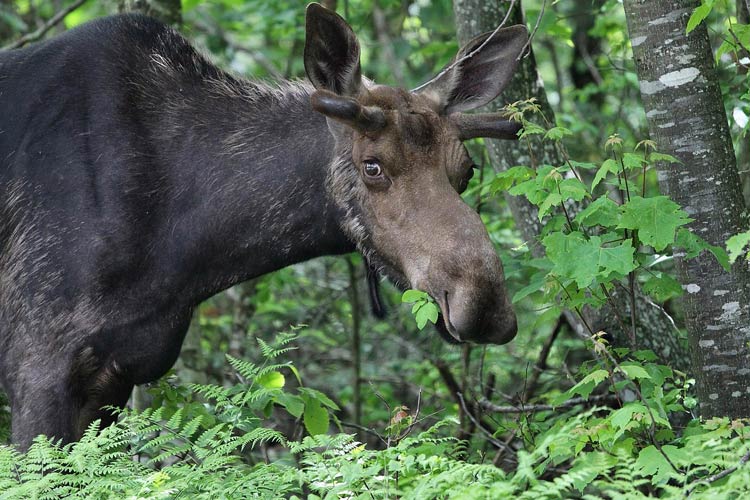
Diet
Moose are primarily herbivores, meaning they eat plant material for their sustenance. They feed on a wide variety of plants, such as grasses, sedges, willows, birch, aspen, and various aquatic plants. In the winter months, when food is scarce, moose can also survive by feeding on the twigs, bark, and buds of trees. A typical adult moose can consume up to 32 kg (71 lb) of food per day.
Moose are also known to be opportunistic feeders, which means they will eat almost any available plant material depending on the season, location, and their individual nutritional needs.
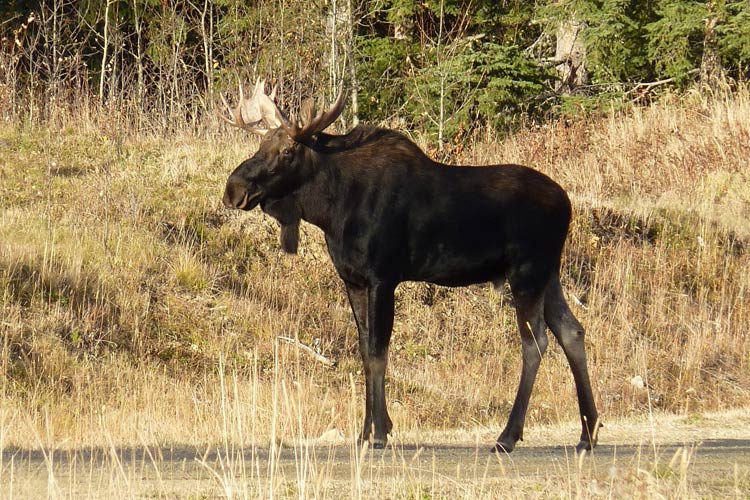
Reproduction and Parenting
Moose have a polygynous mating system, which means that a single male, or bull, mates with multiple females, or cows, during the breeding season. This season typically occurs in the fall, with mating taking place between September and October.
During this time, bulls compete with each other for mating opportunities by engaging in displays of dominance, which can include vocalizations, thrashing their antlers, and sparring with other males. The winner of these competitions earns the right to mate with the cows in a particular area.
After mating, the fertilized egg implants in the cow’s uterus, and the gestation period lasts for approximately 7-8 months. Calves are born in late spring or early summer, weighing around 15-35 kg (33-77 lb) at birth. Twins are relatively rare, and most cows give birth to a single calf.
Cows are very protective of their calves, and the young stay close to their mothers for several months. Moose calves are able to stand and walk within a few hours of being born, and they start to eat solid food when they are around one week old. However, they continue to nurse from their mothers for several months, until they are weaned and able to survive on their own.

Predators and Threats
Despite being the largest deer species, moose face several threats from predators, including wolves, bears, and humans. In areas where moose populations are high, predators can help control their numbers, but in areas where populations are low, predation can be a significant threat. Moose are also vulnerable to disease, such as chronic wasting disease, a fatal neurological disorder that affects several deer species.
Human activities such as hunting, habitat destruction, and vehicle collisions are also major threats to moose populations. Hunting is regulated in many areas to ensure that populations remain stable, but illegal hunting and poaching remain significant problems in some areas. Habitat loss and fragmentation due to human development can also reduce available habitat for moose, leading to smaller and more isolated populations. Finally, vehicle collisions with moose are a common cause of mortality in many areas, particularly in regions where roads and highways intersect with moose habitats.
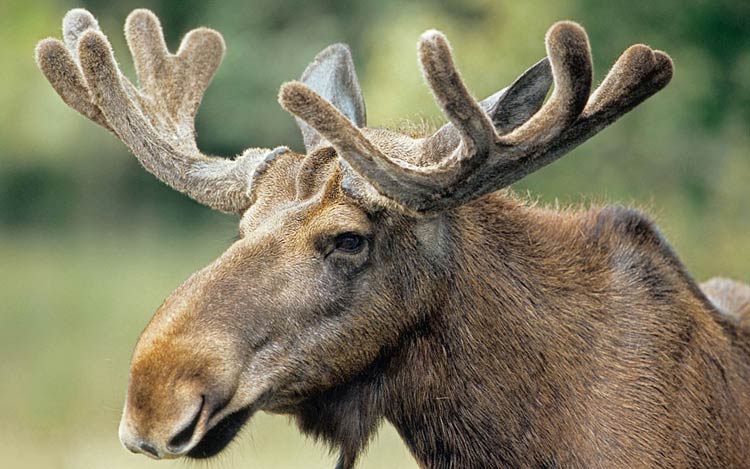
Interactions with Humans
Moose have a complicated relationship with humans. On one hand, they are a popular game animal for hunting and are also important for ecotourism in areas where they are abundant. Moose can also cause significant damage to crops, gardens, and trees, leading to conflicts with farmers and property owners.
In some areas, moose are also a safety concern for motorists, as they can be difficult to spot on the road and can cause serious damage if struck by a vehicle.
Moose have been domesticated in some areas for their milk and meat, although this is relatively rare.
Overall, humans have had both positive and negative impacts on moose populations, and efforts are ongoing to manage their populations in a way that balances their ecological and economic value with potential conflicts and safety concerns.
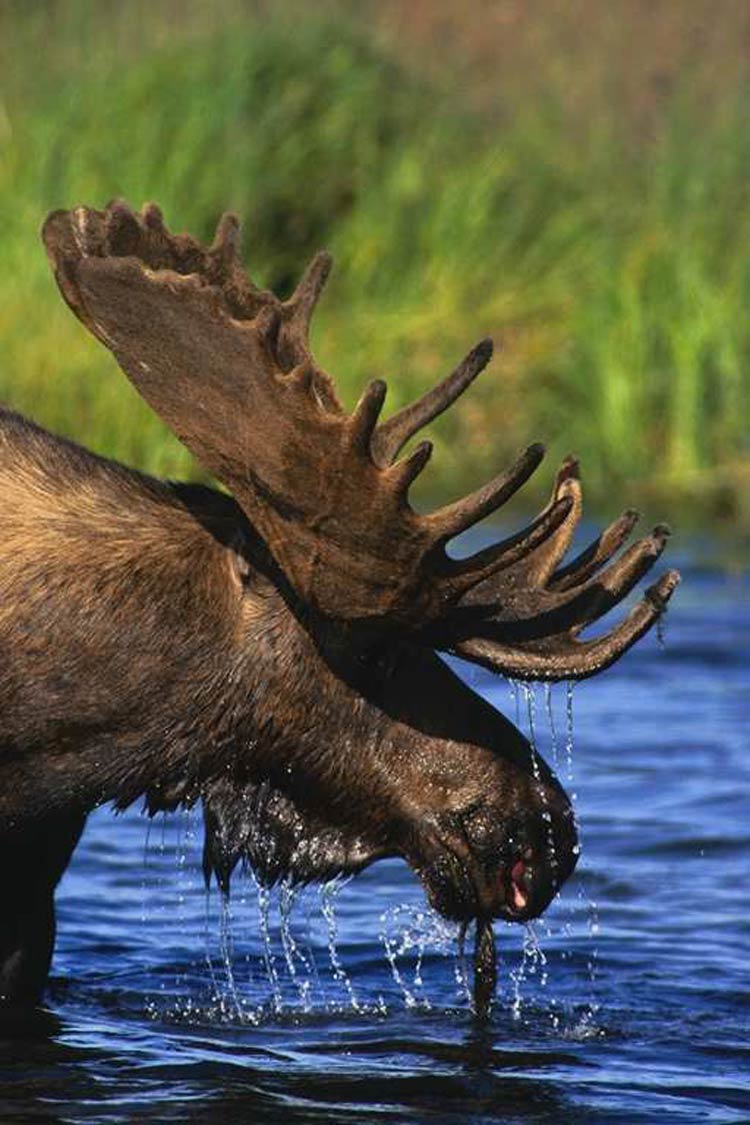
Population
The population of moose varies across their range, with some areas experiencing population growth while others have seen declines. In some regions, moose populations are managed through hunting to maintain sustainable numbers. According to the International Union for Conservation of Nature (IUCN), the global population of moose is considered stable and not currently facing significant threats. However, localized declines have been observed in some areas, and habitat loss and fragmentation, as well as climate change, are considered potential threats to moose populations in the future.
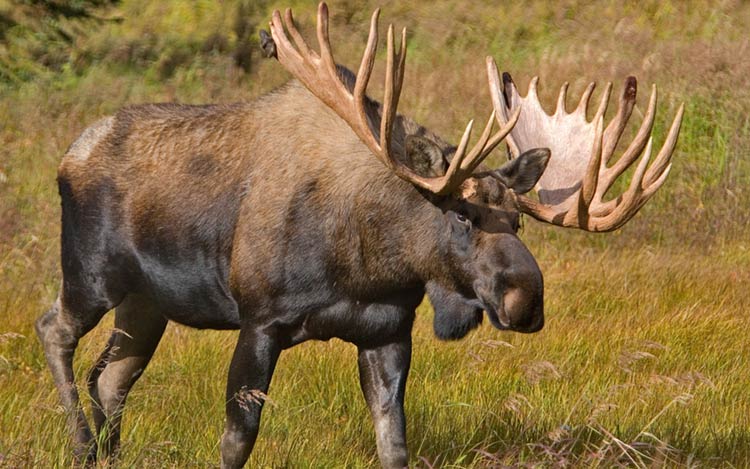
Status and Conservation
The moose is not currently considered a threatened species on a global level, with the International Union for Conservation of Nature (IUCN) listing the species as being of “least concern.” However, the moose has suffered localized declines in some areas due to habitat loss and fragmentation, disease, predation, hunting, and climate change. Some subspecies are more vulnerable than others, with some being listed as endangered or vulnerable on regional or national levels.
Conservation efforts aimed at protecting moose populations may include habitat preservation and restoration, management of hunting and predator populations, monitoring and research, and efforts to mitigate the impacts of climate change. In some areas, moose populations are managed through hunting to maintain sustainable numbers, with hunting regulations and seasons carefully designed to avoid overharvesting.
Efforts to mitigate the impacts of climate change on moose populations may include reducing greenhouse gas emissions, protecting and restoring habitat corridors, and managing forests to promote greater climate resilience. Disease monitoring and management can also be an important component of moose conservation efforts, as some diseases can have a significant impact on population health and viability.
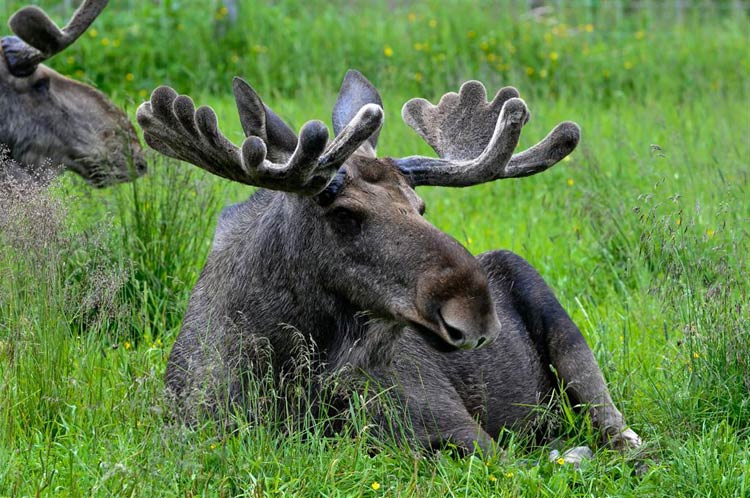
The moose in numbers
- Height of an adult moose at the shoulder: 1.4–2.1 m (4 ft 7 in – 6 ft 11 in)
- Weight of a male (or “bull”) moose: 380 to 700 kg (838 to 1,543 lb)
- Weight of a female (or “cow”) moose: 200 to 490 kg (441 to 1,080 lb)
- Head-to-body length of a moose: 2.4–3.1 m (7 ft 10 in – 10 ft 2 in)
- Length of a moose’s tail: 5–12 cm (2–4+1⁄2 in)
- Length of the antlers of a mature bull moose: 1.2 and 1.5 m (3 ft 11 in and 4 ft 11 in)
- Weight of the largest moose ever recorded: 820 kg (1,808 lb); a bull shot at the Yukon River in September 1897
- Amount of food a typical moose can eat per day: 32 kg (71 lb)
- Normal spread of antlers of mature Alaskan adult bull moose (5 to 12 years old): 200 centimeters (79 in)
- The widest spread recorded for moose antlers: 210 centimeters (83 in)
- Weight of the heaviest set of antlers on record (belonging to an Alaskan moose): 36 kilograms (79 lb)
- Estimated number of moose in Sweden: 10,000 to 30,000
- Estimated number of moose in Estonia: 1,650 to 2,000
- Conservation status of the moose according to the IUCN Red List.: Least Concern

The moose in culture
The moose has played an important role in the culture and mythology of many indigenous peoples of North America, including the Cree, Ojibwe, and Innu. In these cultures, the moose is often viewed as a symbol of strength, endurance, and survival, and is believed to possess spiritual powers.
In modern culture, the moose is a popular subject in literature, film, and art. It has appeared in numerous books, such as “The Call of the Wild” by Jack London, and “The Moosewood Saga” by Van Reid. The moose has also been featured in a number of films, including “Brother Bear” and “Open Season.”
In addition to its cultural significance, the moose is also an important game animal, particularly in North America and Scandinavia, where it is hunted for its meat and antlers. Hunting of moose is often regulated by local wildlife authorities to ensure the sustainability of the population.
Overall, the moose is a fascinating and iconic animal that has captivated human imagination for centuries, and continues to be an important part of the natural world and human culture.
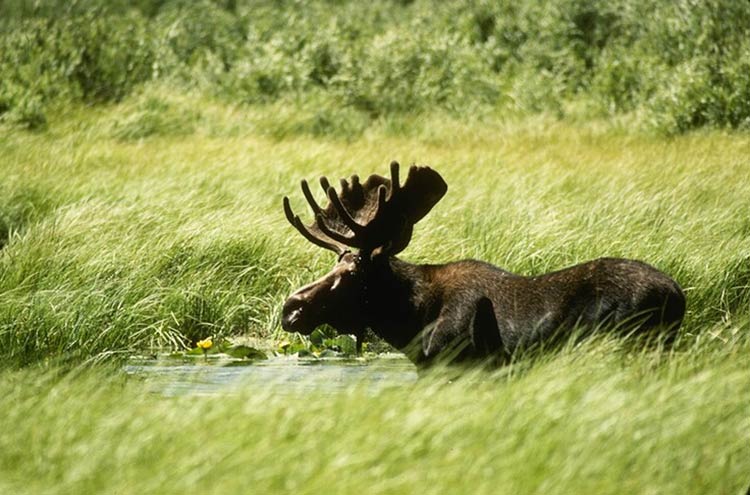
The moose in movies
The moose has been featured in a variety of movies over the years, often in the context of wildlife and nature documentaries. For example, the 2018 National Geographic documentary “Kingdom of the Moose” showcases the behavior and ecology of moose in the wild. In addition, the moose has made appearances in a number of fictional films, such as Disney’s animated movie “Brother Bear” (2003), which features a moose named Rutt and his brother Tuke, who serve as comedic sidekicks to the film’s main characters.
Another notable film featuring a moose is the 2012 Norwegian adventure film “Kon-Tiki,” which depicts the true story of Thor Heyerdahl’s 1947 Kon-Tiki expedition and includes scenes of the crew encountering moose in the wilderness. Overall, the moose has become an iconic symbol of the natural world and continues to captivate audiences through its on-screen appearances.
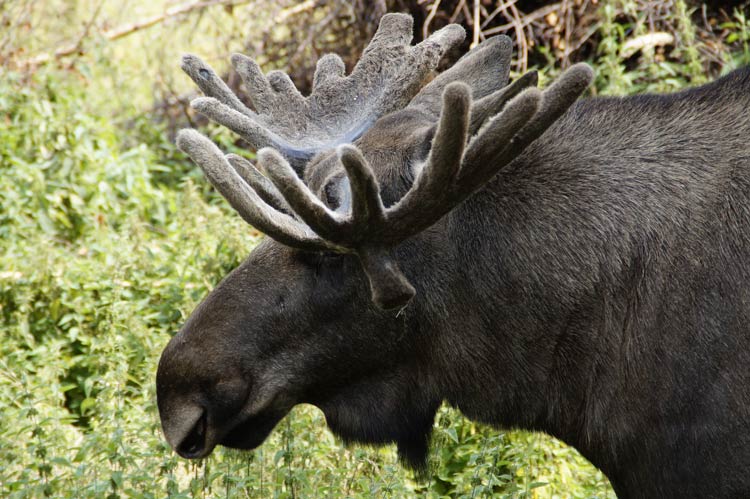
Interesting facts about the moose
- Moose have long legs that allow them to move easily through deep snow and wade through water.
- Despite their large size, moose can swim up to 6 miles per hour (9.7 km/h) and can dive up to 20 feet (6 meters) underwater to feed on plants.
- Moose can run up to 35 miles per hour (56 km/h) for short distances.
- Moose have a unique lip structure that allows them to strip leaves and bark from trees with ease.
- Moose have a specialized stomach with four chambers that allows them to extract maximum nutrients from their food.
- Moose have no upper front teeth, but they have eight sharp incisors on their lower jaw that they use for biting and stripping bark.
- During mating season, male moose become aggressive and will engage in battles with other males for dominance.
- Moose are not social animals and are usually solitary, except during the mating season or when a cow is raising her calf.
- In the winter, moose have a built-in “antifreeze” system that allows them to survive in sub-zero temperatures.
- Moose have a very keen sense of hearing and smell, which they rely on to detect predators and locate food.
- The plural of moose is not “mooses” or “meese” but simply “moose.”
- Moose are the largest members of the deer family and are known as “elk” in Europe and Asia.
- Moose have been known to charge at humans when they feel threatened, so it’s important to give them plenty of space and avoid getting too close.
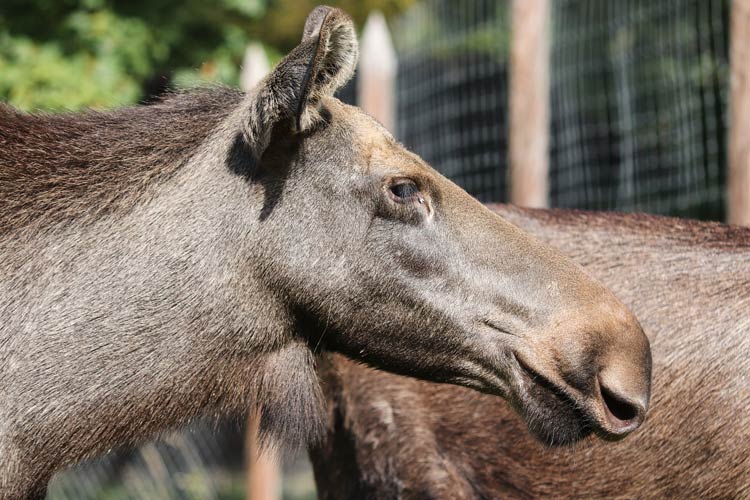
Q&A (questions and answers) about the moose
Q: What is a moose?
A: The moose, also known as Eurasian is the largest extant species in the deer family.
Q: Where do moose live?
A: Moose are found in boreal and mixed deciduous forests across North America, Europe, and Asia.
Q: What do moose eat?
A: Moose are herbivorous and mainly feed on leaves, bark, twigs, and stems of woody plants, as well as aquatic plants and grasses.
Q: What is the size of a moose?
A: An adult moose stands 1.4–2.1 m (4 ft 7 in – 6 ft 11 in) high at the shoulder, with males weighing from 380 to 700 kg (838 to 1,543 lb) and females typically weighing 200 to 490 kg (441 to 1,080 lb).
Q: What is the lifespan of a moose?
A: Moose typically live for around 15-25 years in the wild, but can live up to 20-25 years in captivity.
Q: Do moose have antlers?
A: Yes, male moose grow large, branching antlers that they shed and regrow every year, while female moose have smaller, less-branched antlers.
Q: Are moose aggressive towards humans?
A: Moose can be aggressive towards humans, especially during mating season and when they feel threatened. It is important to keep a safe distance and avoid approaching them.
Q: What is the conservation status of moose?
A: The conservation status of moose varies across different regions and subspecies, with some populations considered endangered or threatened due to habitat loss, hunting, and other human activities.
Q: What is the cultural significance of moose?
A: Moose have played an important role in the mythology, folklore, and traditions of many indigenous cultures across their range, and are also a popular game animal in many countries.
